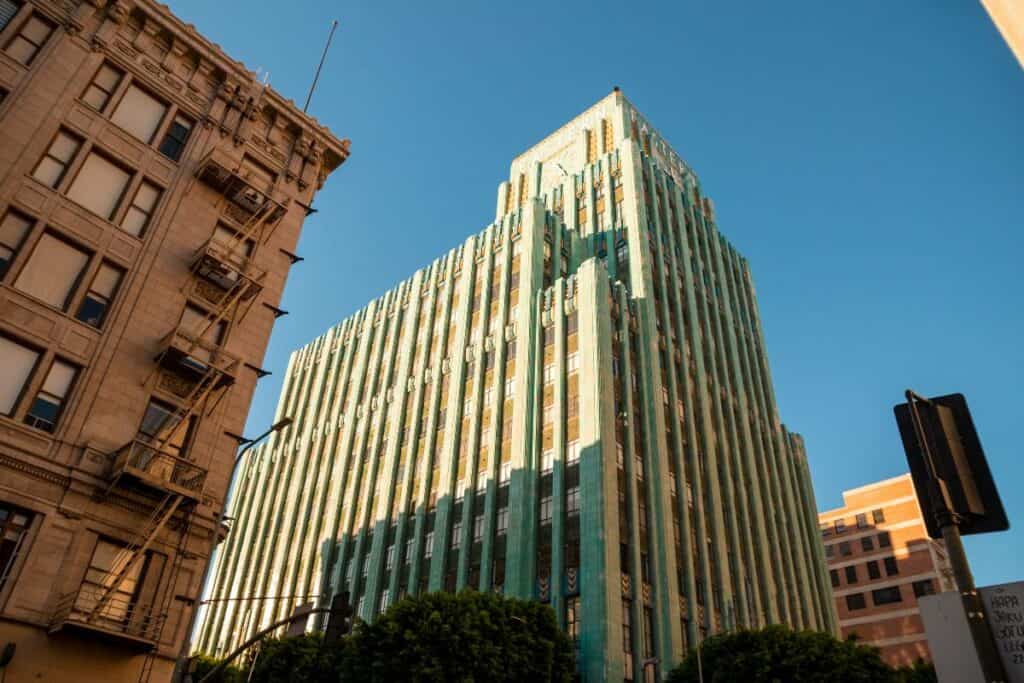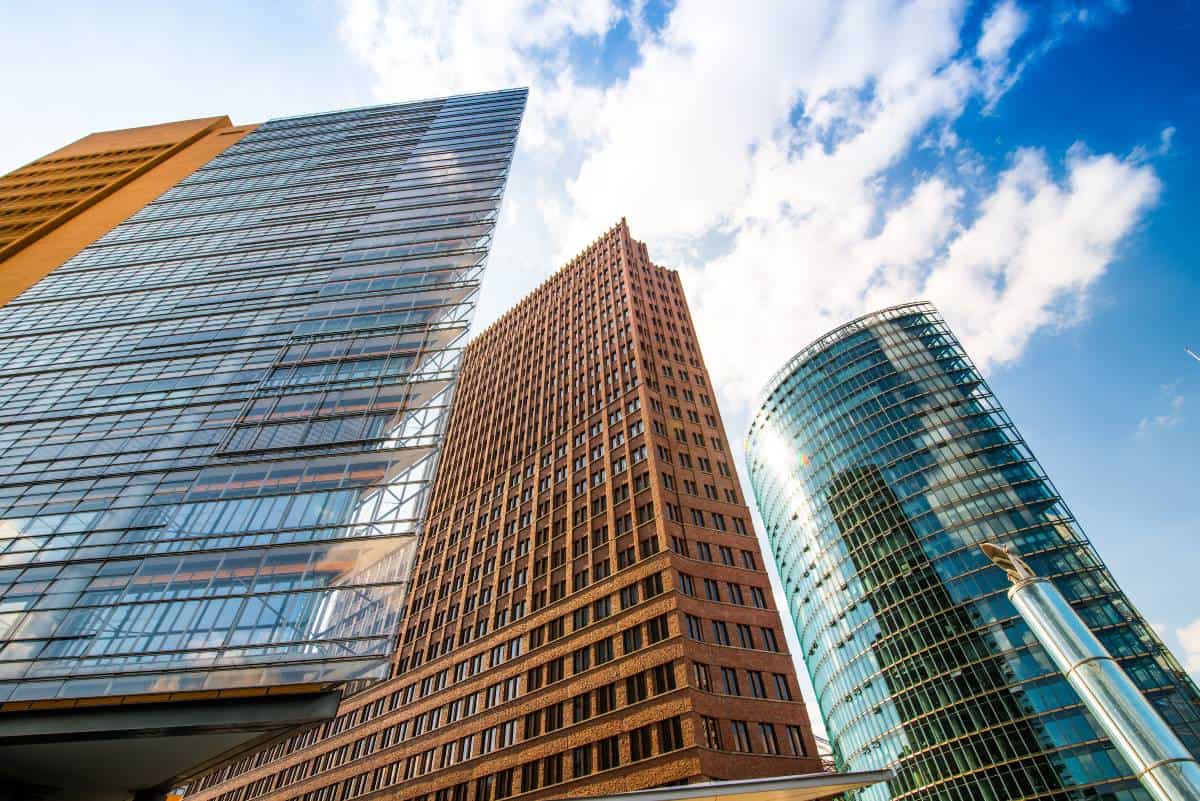As a commercial real estate specialist with almost 20 years of experience, I’ve seen firsthand the pivotal role commercial projects play in the health of local economies. When planned properly, the impact of offices, hotels, retail, and multifamily housing can uplift entire neighborhoods. But it certainly doesn’t happen automatically! Achieving win-win scenarios requires educated developers and thoughtful public policy.
In this blog, we’ll explore how commercial real estate impact on local economies, when strategically developed, can enrich communities through increased tax revenue, job creation, essential services, and more. But no location is immune to potential pitfalls, so we’ll also examine policy solutions that help optimize outcomes. Let’s dive in!
Key Takeaways
- Commercial real estate provides crucial tax revenue for local governments and supports municipal bonds and budgets.
- Development creates local jobs in construction, management, and retail while attracting new residents and businesses.
- New amenities and foot traffic from commercial properties stimulate increased consumer spending that spreads via a multiplier effect.
Table of Contents
Commercial Real Estate Provides a Powerful Tax Base
With strained municipal budgets across the U.S., the tax revenue generated from commercial real estate is a crucial lifeline for funding schools, roads, first responders, and more public services. In particular:
- Property taxes levied on completed commercial projects provide the most direct infusion. As buildings appreciate over time, so do the property taxes they yield.
- Sales taxes from retail establishments and hotels further pad city and state coffers.
- Fees and taxes on new construction bring in substantial revenue as well. Permitting fees, contractor licensing and a web of related business taxes mean commercial growth pays its way.
What’s more, increased property values and tax capacity allow local governments to take on municipal bonds for long-term capital projects like parks and transit lines.
Simply said, welcoming well-designed development, instead of blocking it, pays big dividends!
Job Creation & Local Commerce Get a Shot in the Arm
From architects and carpenters to building managers and baristas, commercial real estate sustains a diverse web of jobs. And as shiny new offices, shops, and apartments come online, they attract even more employment opportunities.
- In the short term, hundreds of construction and contracting jobs spring up to erect new buildings.
- Once open, new stores, restaurants, hotels, and creative firms need staff to keep running. Office space fills with white-collar jobs.
- The mix of amenities entices more residents to neighborhoods, upping demand for local goods and services.
And let’s not forget the quantifiable spillover! With thousands of new arrivals frequenting area businesses, consumer spending enjoys a healthy bump. Workers grab coffee, lunch, drinks, and dinner around commercial hubs, spreading dollars. Based on real-world data, experts often multiply the direct economic impact by 10X to model the full chain reaction.
Essential Amenities Serve Communities
Imagine urban centers devoid of grocery stores, pharmacies, health clinics, or transit links. They wouldn’t function!
Commercial real estate physically enables communities by intermixing indispensable services:
- Retail, from household supplies to clothing boutiques, gives residents walkable shopping.
- Groceries provide fresh food and produce. No more vehicular treks to distant supermarkets!
- Hotels support tourism and business travel, generating significant economic activity.
- Healthcare clinics offer convenience for prescription refills, check-ups, and procedures.
Equally important are the spaces facilitating jobs, creativity, and productivity:
- Co-working spaces allow entrepreneurs to innovate together
- Modern offices help companies attract talent and enable collaboration through intentional design
Public Policy Sets the Table
However, the economic promise of mixed-use development isn’t automatic. Cities and counties must implement zoning, parking requirements, approval workflows, and building codes that allow dense, pedestrian-friendly spaces to rise.
If the regulatory and approval processes stay rigid or Euclidean zones separate uses, you may end up with sterile corridors rather than dynamic neighborhoods.
Below are a few best practices urban planners suggest:
Streamline Approvals:
- Create form-based codes rather than use lists
- Standardize design guidelines upfront
- Offer pre-approved plan catalogs
Incentivize Projects:
- Provide density bonuses
- Waive impact fees
- Phase in property taxes
Enhance Transportation Networks:
- Improve walkability
- Invest in mass transit
- Support shared mobility options
Allow Mixed-Income Housing:
- Loosen restrictions in high-opportunity areas near jobs and transit
- Employ inclusionary zoning ordinances
When governments, policymakers, and visionary developers align—communities reap the rewards! New cultural hubs arise with bustling sidewalks. Local businesses thrive thanks to surging foot traffic. Municipal budgets balance without painful cuts or tax hikes.

Commercial Real Estate’s Impact on Local Economies
Commercial real estate (CRE) development and operations have a significant economic impact on local communities. Well-planned CRE projects can uplift neighborhoods by generating tax revenue, creating jobs, providing amenities, and stimulating growth. However, potential downsides like high housing costs need to be proactively addressed through policy.
Understanding CRE’s Economic Impact
Commercial real estate provides substantial economic benefits to local areas. First, CRE yields much higher annual property tax revenue for municipalities than residential real estate. These taxes help fund vital public services like schools, roads, parks, and first responders. Additionally, the construction of new CRE projects creates many local construction jobs in the short term. Once built and operating, these properties also support permanent jobs in retail, hospitality, and other service industries.
Workers at these establishments further boost the economy by spending their incomes at area businesses, amplifying economic growth through a multiplier effect. Finally, the new amenities and opportunities from CRE help attract new residents and companies. The associated growth in population and business activity compounds the financial impact.
Analyzing Property Values and Economic Growth
While increasing housing inventory helps stabilize home costs and promote affordability, luxury apartments and hotels built as part of mixed-use CRE projects can also raise rents and housing prices if supply is strictly zoned and restricted. Affordable housing requirements on a portion of units in new CRE developments can help offset potential negative impacts. Additionally, public transit-oriented projects allow increased densities and promote equitable access to housing and jobs.
Impact on Tax Revenue for Local Governments
As described previously, property taxes represent the number one source of municipal revenue from commercial real estate projects. However, other tax streams contribute as well, including sales taxes from retail and hotel guests, permitting fees required for new construction, and taxes related to contractor licensing. Overall, these revenues are crucial for funding vital public services like schools, roads, utilities, and first responders and enabling municipalities to take on bonds for large capital projects.
Effects of CRE on Affordable Housing
While increased housing supply inherently promotes affordability, luxury apartment buildings and condos within larger CRE developments could exacerbate pricing issues if zoned carelessly. Inclusionary zoning policies that incentivize affordable units in transit-accessible and high-opportunity areas can help. Similarly, public transit-oriented development increases density, reduces transportation costs, and enables equitable access.
How CRE Affects the U.S. Economy
In 2022 alone, commercial real estate development and operations contributed $2.3 trillion to U.S. GDP and supported over 15 million jobs. This impact is expected to continue growing as construction backlogs are worked through post-pandemic. However, modernizing land use policies and zoning codes will likely be needed to allow sustainable CRE growth at the densities required to support local tax bases.
The economic contributions clearly show proactive CRE growth planning has immense community benefits if externalities are properly addressed. Inclusive public policies and development practices can help optimize outcomes.

FAQs
Which property types generate the most tax revenue?
Office towers and luxury hotels contribute disproportionately high property taxes compared to the public services they consume. As a rule of thumb, commercial buildings yield 10 times the taxes of residential properties.
Do commercial developments negatively impact housing costs?
On the contrary, increasing housing supply helps stabilize rents and home prices. New mixed-use projects add badly needed inventory with ground-floor retail. Transit-oriented buildings allow more households to go car-free.
Why don’t more cities seem vibrant?
Outdated zoning codes segregating uses are partly to blame. As well, drawn-out permitting deters innovative builders. Many municipalities are now modernizing bureaucratic processes to incentivize creative development.
Can sustainability be incorporated?
Absolutely! LEED certification, energy efficiency, water conservation, integration of green spaces, renewable on-site power, EV charging stations, and features supporting walkability and mass transit all provide environmental benefits.
Who typically builds mixed-use projects?
Medium to large development companies can assemble land, navigate regulations, and secure commercial tenants to kickstart initial phases. Public-private partnerships can be instrumental in projects requiring coordination at a vast scale.
Conclusion
In closing, commercial real estate—when thoughtfully leveraged—can uplift individuals and communities by satisfying modern lifestyles. However, I recognize that navigating zoning policies or making large-scale development decisions can feel overwhelming at times.
Having advised both private builders and municipalities for nearly 20 years, I’ve learned that no two projects or places are identical. The path that makes sense for one city could fail in another. Yet some universal best practices exist for sustainably enhancing neighborhoods.
If you have questions on positioning your next commercial real estate project for a win-win community impact, I offer complimentary 1-hour consultations. Property owners, investors, business leaders, non-profit partners, and policymakers are all welcome. My goal is to hear your vision and then provide tailored guidance so your work positively transforms as many lives as possible.
Uplifting communities requires collaboration across sectors. Let’s connect! Reach out today to schedule an advisory session focused on your unique objectives. With open communication and creativity, our cities can prosper for generations to come.




